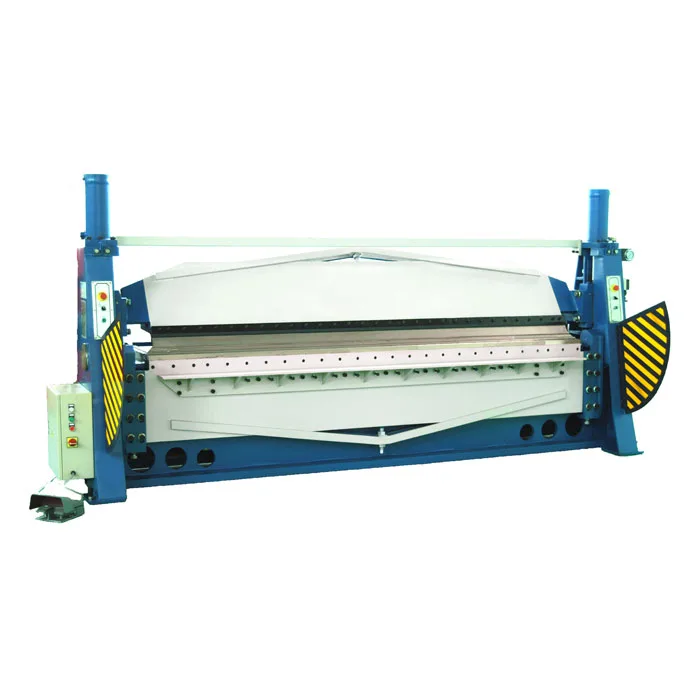
How to Optimize Your Metal Sheet Press Brake for Different Applications
- By:Metmac
- 2024-07-29
- 140
Press brakes are essential tools in metal fabrication, forming sheet metal into complex shapes with ease. Optimizing your press brake for different applications is crucial to achieve the best results and maximize productivity. This article explores key aspects of optimizing your press brake for various materials, thicknesses, and bending requirements.
Press Brake Capacity and Ram Speed
Consider the press brake’s tonnage capacity and ram speed when selecting a machine for your specific needs. For thicker materials, a higher tonnage capacity is required to generate sufficient force for bending. Ram speed affects production rate, with a faster ram allowing for faster cycle times.
Die Selection and Material Type
The choice of dies depends on the material and thickness of the sheet metal being processed. Punches and dies of different sizes and shapes are available to accommodate various bend angles and radii. Softer materials, such as aluminum, require less force and can be bent with sharp-angled dies, while harder materials, such as stainless steel, necessitate blunt-angled dies and higher tonnage capacity.
Bending Angle and Bend Radius
Accurate bending requires precise control over the bending angle and bend radius. Adjusting the ram stroke and die depth allows for precise angle control. The bend radius is determined by the punch nose radius and the material thickness. Using a punch nose radius smaller than the material thickness creates a sharper bend radius, while a larger punch nose radius produces a wider radius.
Die Clearance and Bending Direction
Die clearance refers to the space between the punch and die. Proper clearance is crucial to prevent material tearing or buckling during bending. The optimal clearance varies depending on the material type and thickness. Bending direction also plays a role: bending in the direction of the grain produces stronger bends, while bending against the grain can lead to material deformation.
Hold-Down Pressure and Alignment
Hold-down pressure keeps the sheet metal in place during bending, preventing it from slipping or warping. The pressure should be sufficient to hold the material securely without causing dents or impressions. Proper alignment of the sheet metal with the machine’s center is essential for accurate and consistent bending results.
Tool Maintenance and Lubrication
Regular maintenance and lubrication are critical to ensure optimal press brake performance. Inspect dies and punches for wear and tear, and replace them as needed. Lubricating the press brake’s moving parts reduces friction and extends the machine’s lifespan.
By considering these factors and optimizing your press brake accordingly, you can maximize its performance and achieve the desired bending results efficiently and effectively.
-
Sheet Metal Press Brake: The Pillar of Precision Bending with METMAC
2025/11/18 -
Metal Sheet Punching Machine: Unleashing Efficiency and Versatility with METMAC
2025/11/18 -
Metal Folding Machine: The Art of Precision Bending with METMAC
2025/11/18 -
Steel Laser Cutter Machine: The METMAC Standard for Unmatched Precision and Durability
2025/11/18
-
Advanced Sheet Metal Rolling, Laser Cutting, and Folding Machines for Precision Fabrication
2025/10/31 -
High-Performance Sheet Metal Bending and Cutting Machines for Modern Fabrication
2025/10/31 -
High-Quality Sheet Metal Equipment for Sale: Efficient Solutions for Modern Manufacturing
2025/10/31 -
High-Performance Sheet Metal Equipment for Sale: Forming and Shearing Solutions for Modern Fabrication
2025/10/22
-
A Guide to the Latest Innovations in Sheet Metal Folding Machines
2024/11/29 -
Key Features to Consider When Investing in a Sheet Metal Folding Machine
2024/11/28 -
Enhancing Precision with Advanced Sheet Metal Folding Machines
2024/11/27 -
How to Choose the Right Sheet Metal Folding Machine for Your Workshop
2024/11/26







